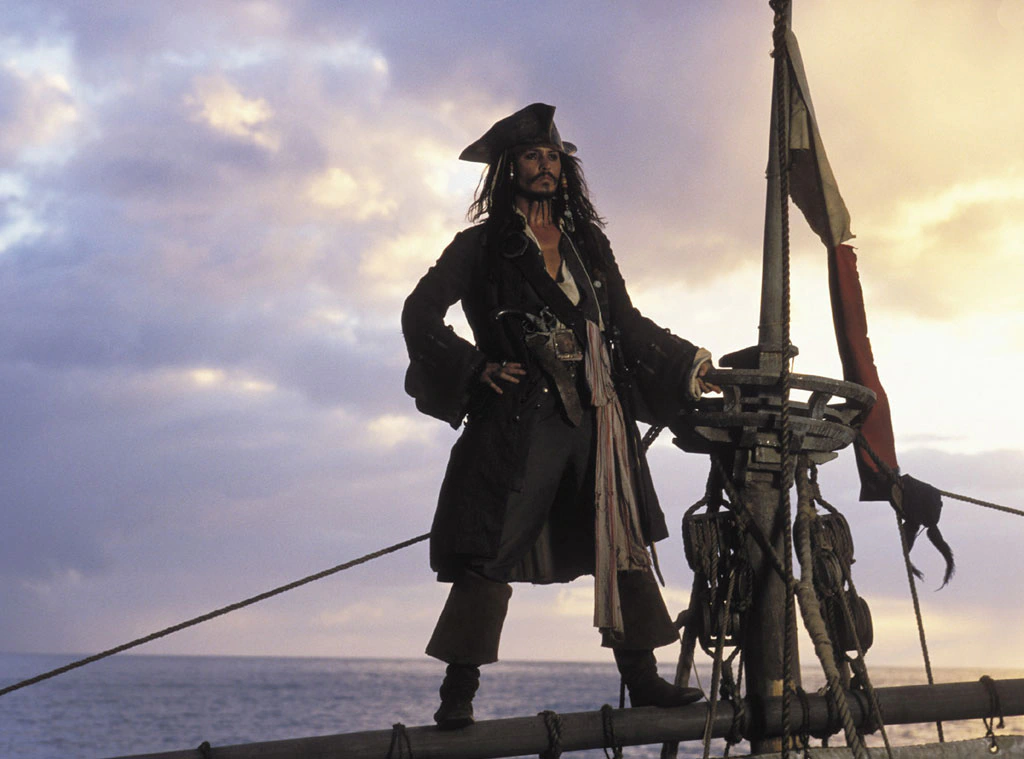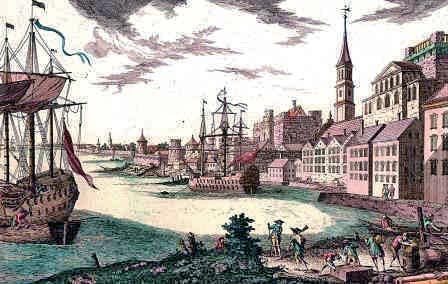By Peter Pavarini

Piracy[i] has existed ever since people began transporting their valuables by sea. Every civilization with a maritime industry has suffered from it. While the scourge of piracy has occasionally abated[ii] over the centuries, it has never been completely eliminated. The chief reason why piracy remains with us in the 21st century is governmental tolerance – if not active support – of such criminal behavior.
Much of what today’s society knows about pirates and piracy comes from romanticized accounts in literature, such as Robert Lewis Stevenson’s classic adventure story Treasure Island, and more recently Hollywood’s Pirates of the Caribbean movie series. Entertainment of this kind often portrays pirates as misunderstood rebels or outcasts but is rarely based upon an accurate picture of their ruthless, predatory nature.
The Golden Age of Piracy
The so-called “Golden Age of Piracy” was ushered in by the Spanish conquest of the Aztecs and Incas which resulted in a steady flow of gold and silver crossing the Atlantic on vulnerable galleons. In the 17th century French pirates preyed on Spanish ships in the Caribbean and were called “buccaneers” after the grilled meat they liked to eat. English, Dutch and Portuguese buccaneers soon joined the French – all after the same booty. Once the riches of Central and South America were depleted, pirates turned their attention to ships traversing the Indian Ocean and Red Sea laden with the silks, gems and bullion of the Mughal Empire.[iii]
What ties piracy to the British colonies of North America and later to the United States of America may have been buried in the footnotes of history books were it not for famous pirates like Captains William Kidd and Blackbeard Teach. Their friendliness with the colonial governors of the Eastern Seaboard became the template for the kind of political corruption that exists today in most major U.S. cities.
Pirates Seeking Safe Harbors
Notwithstanding their notorious seafaring skills, pirates needed port cities to monetize the goods they stole, reprovision their ships, recruit new shipmates and spend their ill-gotten loot on things not commonly found at sea, like rum and women. Although American colonists – who were mostly law-abiding farmers – wanted nothing to do with pirates, their overlords – governors and other officials appointed by the British Crown – recognized piracy as an opportunity for self-enrichment. These petty bureaucrats considered themselves woefully underpaid and saw no harm in making a deal with villains even though they were guilty of capital crimes under British law. The colonial governors knew their subjects needed hard cash to buy manufactured goods from the mother country. Coins and other species were always in short supply in the colonies. There was no better way to flood their local economies with pieces of eight than to welcome pirates with open arms.

In 1684 alone, pirates infused £80,000[iv] into Boston’s economy, at a time when the average male worker only earned £10 in a year. British-made goods were not only expensive, but they were also burdened by taxes and middleman costs. The pirates brought highly prized indigo, cloth and sugar to the colonists at a fraction of their market prices. And, if giving pirates a license to fence stolen property wasn’t enough incentive, the payment of bribes and kickbacks was always an option. Governors like Benjamin Fletcher of New York is said to have pocketed £30,000 pounds during his six years in office in exchange for the protection of hundreds of pirates.
No Justice – No Consequences
Colonial leaders knew they were consorting with criminals, but seldom did they dare bring any pirates to justice. Normally, that required sending them back to England for trial at the colony’s expense. It was far easier to look the other way or, as William Penn did in 1699, issue a proclamation condemning piracy with no intention of enforcing it. On the rare occasion that pirates were brought to trial in the American colonies, as was the case with the pirate ship Goodspeed in 1690, fourteen crew members were ultimately convicted and sentenced to death by hanging. However, all but one of the pirates were pardoned by Massachusetts Governor Simon Bradstreet upon the urging of certain “women of quality”.
The most fascinating aspect of America’s tolerance – if not love affair – with pirates is how such evil men (and a few women) imbedded themselves in our culture. Captain William Kidd was considered a “respected man” in New York City despite his previous career as a buccaneer in the Caribbean, his quick temper and public displays of arrogance. The ruling class loved him, however, because he had helped them put down a political rebellion. They rewarded him by allowing him to reside for a time at one of New York’s most prestigious addresses and regularly mix with the upper reaches of society. But Kidd soon tired of the patrician life and returned to his pirate ways in 1695. After five more years of trickery and barbarism, he was captured in 1701 and publicly executed in London for murder and piracy.
The Engaging Character of Captain Jack Sparrow
From this historical context emerges the fictional character of Captain Jack Sparrow, portrayed by Johnny Depp in Disney’s blockbuster series Pirates of the Caribbean. Said to be inspired by the 17th century English pirate Jack Ward, Sparrow is a shrewd, calculating but eccentric figure[v] famous for talking his way out of any mess. Those are his positive qualities. On the downside, he exemplifies much of what is wrong with modern American culture. He walks like a woman, uses flailing hand gestures, speaks with slurred words and wears heavy makeup. He doesn’t care what others think about him or his behavior. He only does what he thinks is right. His moral ambiguity makes him the perfect anti-hero in today’s youth culture.
Villains and other anti-social types have always captured the imagination of the American public, so the character of Captain Jack Sparrow does not stray far from the same formula that made the Godfather movie series so successful in the 1970s and 1980s, or more recently, the Yellowstone TV series starring Kevin Costner. What’s unique about fictional pirates like Jack Sparrow is how realistically they represent the lawlessness engulfing America’s major metropolitan areas and borders today. Added and abetted by the petty bureaucrats and corrupt politicians who took a page from the colonial governors, organized retail crime accounted for a loss of $94.5 billion in 2021, not to mention the dramatic increases in violence and aggression associated with such larceny.[vi] Major chains like Walmart and Target have now admitted defeat and are closing hundreds of stores they can no longer operate safely or profitably.[vii]

Incredibly, crooked politicians seem largely unconcerned by the loss of jobs and tax revenue associated with these store closures. Could it be that they, like the colonial era governors, have already struck deals with the thieves?
Putting aside the political spin of the post-COVID era, non-enforcement of applicable laws is without a doubt the primary cause of this rapid increase in criminal activity. Just as pirates preyed on undefended ships at sea, modern day thieves look for soft targets like open stock retailers, not hardened banks or jewelry stores. When retail employees and law enforcement personnel are ordered to “stand down”, thieves see that as an open invitation to take whatever they can easily cart away and sell into a burgeoning secondary market. Similarly, when criminal cartels see no impediment to smuggling people, drugs and weapons across a border which is effectively wide open, is anyone surprised that the U.S. has experienced the greatest insertion of illegal migrants and contraband in our nation’s history?
An Opposing Viewpoint
To be fair, I’ve encountered a few opposing views on this subject. For instance, some scholars contend that, throughout history, pirates have only been rebelling against a system that was stacked against them. If you share this view, you probably see piracy as an indictment of capitalism’s failures and unjust practices like white racism and oppressive sexual mores. To remedy these and other economic and social ills, the United States ought to adopt the revolutionary form of democracy used by pirates of old. Every crew member of a pirate ship was supposedly entitled to an equal voice in the ship’s administration, how the booty would be shared, and how to handle an uncooperative captain (e.g., walk the plank, put ashore, etc.). I’ve found no evidence, however, that this utopian view of piracy actually resulted in fewer mutinies, less harm to other shipmates, much less a more compassionate way of dealing with the victims of piracy.[viii]
When thieves first got into piracy, they relied entirely upon “grab and run” tactics. That worked until they decided to make piracy into a full-time business operation. After that, they needed safe harbors to reprovision, unload their booty and repair their ships. These venues became known as “pirate nests”. The earliest of these havens were on the island of Hispaniola. Later, they made Jamaica their temporary home. Eventually, the pirates discovered they would be better cared for by easily corrupted government officials in cities along the Eastern Seaboard.
Pirate Nests – Yesterday and Today
The Golden Age of Piracy is said to have ended around 1720 [ix], but in fact, piracy only cloaked itself in respectability after that date. Cities like New York, Boston, and Philadelphia have continued to welcome pirates, as have sister cities like Port-au-Prince, Haiti and Port Royal, Jamaica. Pirates may go by other names today, but they work closely with corrupt district attorneys, judges and other elected officials to thrive in the lawless environment of these urban hellholes. Indeed, the copacetic relationship between modern-day pirates and modern-day politicians has been nationalized. Today’s preeminent pirate nest is Washington, D.C.
[i] The word piracy comes from the Latin word pirate which meant sea robber. Piracy has evolved over the centuries and is now more commonly applied to the illegal copying and distribution of copyrighted materials, including film, music and software.
[ii] See “Maritime Piracy is on the Decline…Can It Stay That Way?”, https://georgetownsecuritystudiesreview.org/2022/11/14/maritime-piracy-is-on-the-decline-can-it-stay-that-way/ ; piracy remains a $13 to $16 billion a year drain on shipping. According to the ICC International Maritime Bureau, there were 195 reported incidents of piracy in 2021, most of these in the Indian Ocean and South China Sea. The recognized state sponsors of such piracy include Somalia and the Chinese Communist Party. Also see the 2013 film Captain Phillips starring Tom Hanks for a reliable depiction of modern day piracy.
[iii] An excellent treatise on the Golden Age of Piracy is Eric Jay Dolin’s Black Flags, Blue Waters, Liveright Publishing (2018).
[iv] In current dollars, this is equivalent to $320 million.
[v] Sparrow’s character is also said to be a combination of Rolling Stones’ guitarist Keith Richards and Looney Tunes cartoon character Pepe Le Pew.
[vi] See “Organized Retail Crime”, National Retail Association Policy Issues.
[vii] See Nicholas Fondacaro, “ABC Gawks at Shoplifting Surge, Shocked Stores Are Closing Down”, www.newsbusters.org/blogs (May 18,2023).
[viii] Some of the same scholars also claim that modern maritime piracy could be addressed by establishing a welfare program for out-of-work fishermen and others who previously earned their livelihood from the sea. Unfortunately, failed states like Somalia appear unlikely to adopt such programs.
[ix] In 1721, the Act for the More Effectual Suppression of Piracy was enacted giving the British Crown additional ways to battle pirates. In addition to reiterating the death penalty for those found guilty of piracy, the new law required officers and crew of all armed vessels to fight back in order to keep their ships from falling into the hands of pirates. Between 1719 and 1726, the number of pirates in the colonies dropped to an insignificant number. This encouraged local officials to join in the fight, bringing an end to the most dramatic period in American piracy.

Be First to Comment